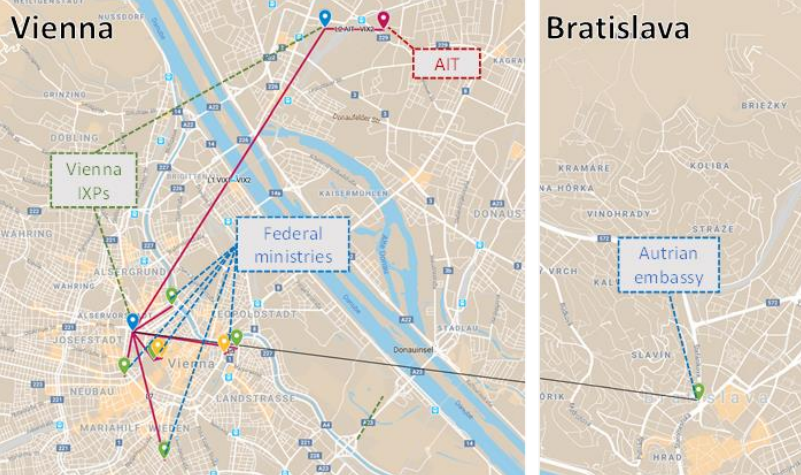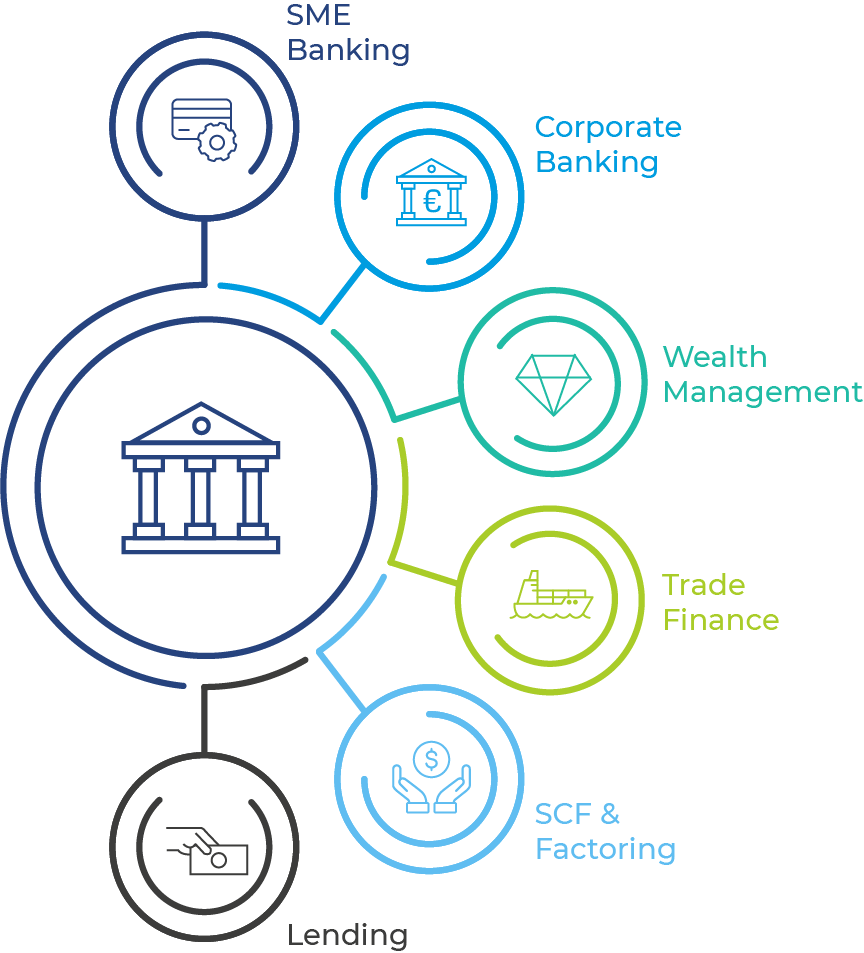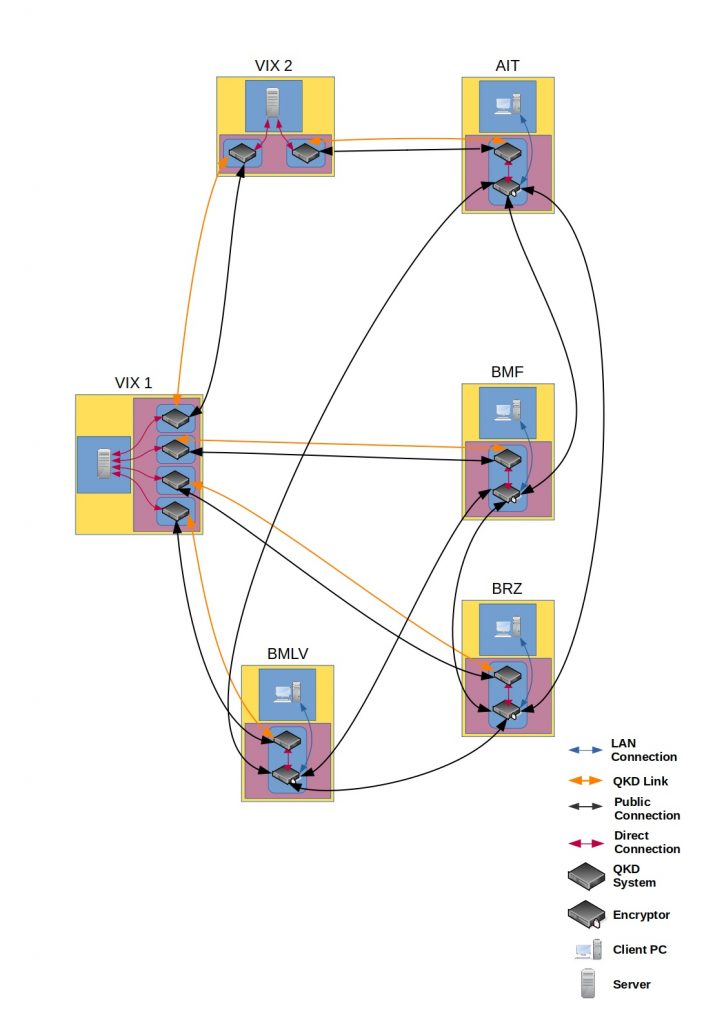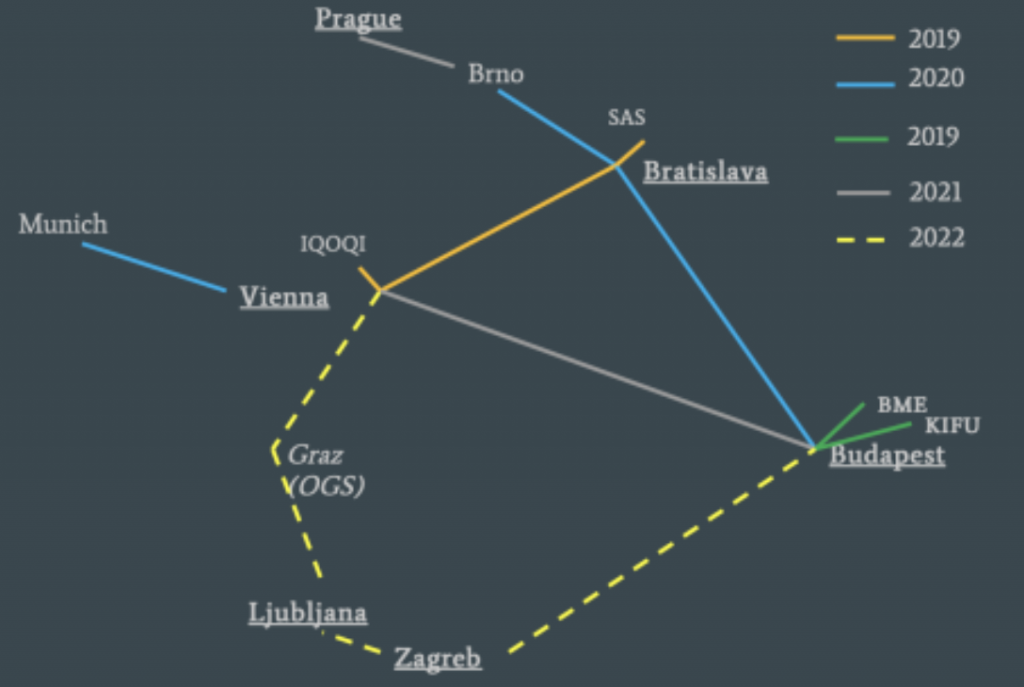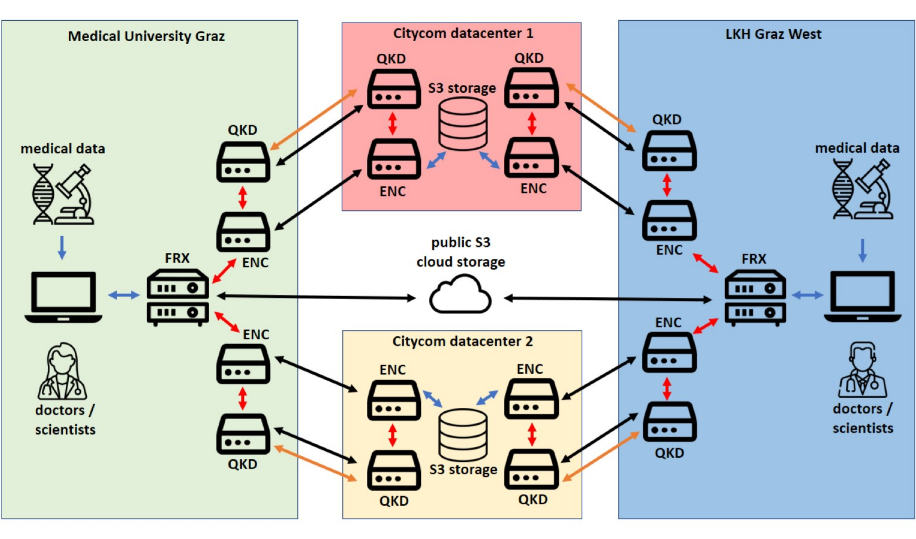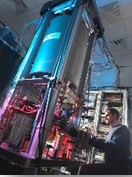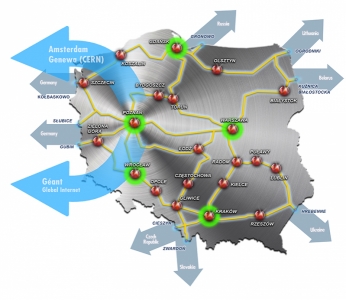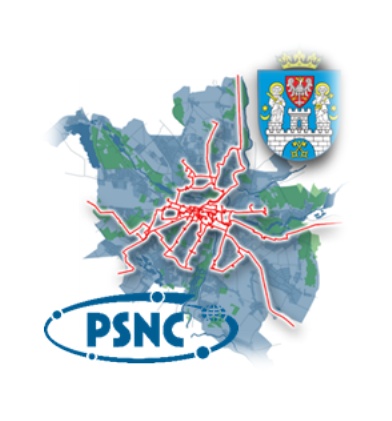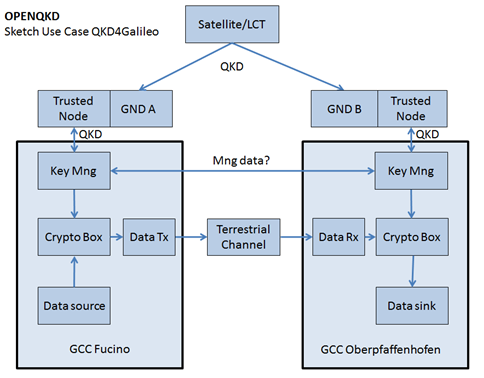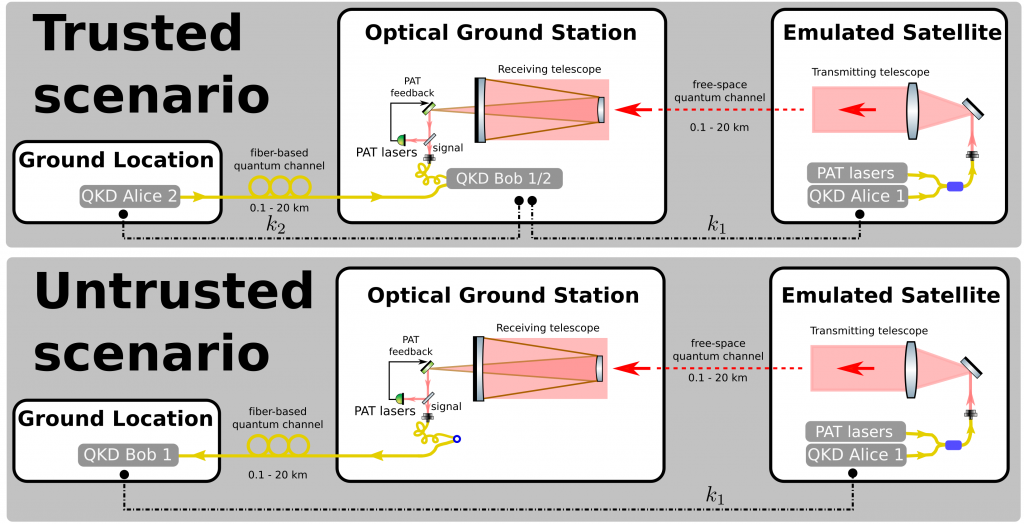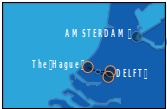OpenQKD will act as a facilitator and multiplicator for quantum-based cryptography solutions. The cooperation of European academia, industry and startups on the deployment of open testbed sites across Europe, accessible for external stakeholders to perform field trials, will significantly increase the awareness and facilitate the involvement with QKD.
1st Open Call
Padua, IT
Paris, FR
Athens, GR
Geneva, CH
Delft, NL
Oberpfaffenhofen, DE
Matera, IT
Madrid, ES
Berlin, DE
Vienna, AT
Cambridge, UK
Barcelona, ES
Poznan, PL
With use case #01 we intend to connect the PSNC datacenters (primary and backup) in Poznań. These sites are also main Point Of Presence of PIONIER network (Polish National Research and Education Network), GEANT network and other international PSNC and PIONIER partners. Due to resilience and Service Level Agreement requirements these datacenters are connected using two independent optical cables, different cable route and cable pipes. The two routes have 4 and 10 km in distance. A QKD system will be installed along with an encryptor to ensure that network traffic, backup services, data from HPC machines may relay on secure connection and critical messages forwarded to the PIONIER Network Operator Center.
With use case #06 we intend to connect the VSB and PSNC datacenters in Ostrava and Poznań. These sites are also Point Of Presence of HPC infrastructures and National Research and Education Network infrastructures, GEANT network and other international VSB, PSNC partners. Load balancing of work schedule of supercomputers or parallel processing of “big data” within a network of supercomputers involves the transport of virtual machines, which is to be secured through QKD layer equipment. Compression techniques of virtual machines will be evaluated for fast data exchange optimized for QKD technology. Two nodes will be deployed at the Cieszyn and Ostrava supercomputing centers and the impact of QKD on HPC traffic pattern and services will be investigated. QKD link is planned to be implemented with one trusted relay along the route and key rate in the rage of 1 Mbps. The HPC traffic from Cieszyn – remote HPC site will be forwarded using PSNC PIONIER network to PSNC datacenter in Poznań. Due to segment lengths and required number of QKD trusted nodes it is not possible to connect directly by QKD PSNC and VSB datacenters in Ostrava and Poznan.
A QKD system will be installed along with an encryptor to ensure that network traffic, backup services, data from HPC machines may relay on secure connection and critical messages forwarded to the PIONIER Network Operator Center.
With use case #07 we intend to connect the PSNC datacenter in Poznań and hospital where PSNC delivers a number of IT services. PSNC site is also main Point Of Presence of PIONIER network (Polish National Research and Education Network), GEANT network and other international PSNC and PIONIER partners. Hospital site is one of the main PSNC metro area POZMAN sites. Existing medical infrastructure and its modern services rely heavily on storing of digital medical data, results and its frequent exchange between hospitals, medical institutions, and medical staff (using remote and mobile services, devices). It applies for both the medical test results and its interpretation documentation. One of the important aspects in this context is also telemedicine and remote live transmission, participation in medical surgeries, activities and consulting. Due to inherent personal and confidential data, these services are planned to be secured and integrated with QKD layer network and services. This requirement is strengthened by the increasing amount of medical services that store, analyze and sent entire human genome data that should be protected particularly well. These use cases introduce specific requirements for the data security and potential QKD integration. The QKD network services must run on various hardware and software platforms. The nodes will be deployed in Poznan between hospitals and PSNC data centers. Impact on services and infrastructure will be investigated. The route have 9 km in distance. A QKD system will be installed along with an encryptor to ensure that network traffic, services, may relay on secure connection and critical messages forwarded to the PIONIER and POZMAN Network Operator Center.
With use case #08 we intend to connect the PSNC datacenter in Poznań and Poznan city hall branches that provide critical IT services for citizens. PSNC site is also main Point Of Presence of PIONIER network (Polish National Research and Education Network), GEANT network and other international PSNC and PIONIER partners. City hall site is one of the main PSNC metro area POZMAN sites. Currently more and more local and central government institutions—in particular city halls—provide a large number of services for citizens using digital platforms. Large numbers of confidential, private and state documents are being digitized, confirmed and sent between various institutions that generally use different software and hardware platforms for the each specific service. Most of these services were and are developed independently and use different technologies, software solutions, architecture and hardware solutions. An important element of such platforms is user authentication (trusted profiles etc.). Apart from the documents aspect, local state institutions provide different services like registration to schools, exam evaluations, digital libraries etc. All these services are to be secured and further enhanced with QKD network layer infrastructure and its impact is to be evaluated. The nodes will be deployed in Poznan between PSNC data centers and Poznan city hall branches. These use cases introduce specific requirements for the data security and potential QKD integration. The QKD network services must run on various hardware and software platforms. The nodes will be deployed in Poznan between city hall branches and PSNC data centers. Impact on services and infrastructure will be investigated. The route have 4 km in distance. A QKD system will be installed along with an encryptor to ensure that network traffic, services, may relay on secure connection and critical messages forwarded to the PIONIER and POZMAN Network Operator Center.
With use case #09 we intend to connect the PSNC datacenter in Poznań and banking datacenter that provide critical digital banking services for citizens. PSNC site is also main Point Of Presence of PIONIER network (Polish National Research and Education Network), GEANT network and other international PSNC and PIONIER partners. Banking datacenter site is one of the PSNC metro area POZMAN sites. The banking sector relies heavily on advanced, fast digital services delivered to end users and between the bank data centers themselves. Large amounts of confidential data is being sent, backed up and synchronized between various banking institutions and divisions. Digital trading platforms are delay and speed sensitive. The services and communication channels between banking institutions are to be secured with advanced QKD network layer infrastructure. The nodes will be deployed in Poznan between PSNC data centers and data centers that host services for the banking sector. The investigated impact will includemaximum possible key exchange rate, delay introduced for the services and management overhead of QKD network layer, number of interconnected, synchronized and secured by QKD network layer systems/platforms, distance vs key rate vs optical power. It is proposed to investigate also concept of “quantum money” and possible implementation in exemplary transactions.
All these services are to be secured and further enhanced with QKD network layer infrastructure and its impact is to be evaluated. The nodes will be deployed in Poznan between PSNC data centers and banking data centers. These use cases introduce specific requirements for the data security and potential QKD integration. The QKD network services must run on various hardware and software platforms. Impact on services and infrastructure will be investigated. The route have 8 km in distance. A QKD system will be installed along with an encryptor to ensure that network traffic, services, may relay on secure connection and critical messages forwarded to the PIONIER and POZMAN Network Operator Center.
With use case #10 we intend to connect the PSNC datacenter in Poznań and local police datacenter that provide critical services for police infrastructure. PSNC site is also main Point Of Presence of PIONIER network (Polish National Research and Education Network), GEANT network and other international PSNC and PIONIER partners. Police datacenter site is one of the PSNC metro area POZMAN sites. Police currently uses different advanced digital tools in its operational activities. Such tools frequently use large amount of confidential, operational data, big data analytics and deep learning techniques. Data is being collected and stored from large number of different digital sources and its integrity and security is essential. Such services are planned to be secured and enhanced with QKD network layer equipment. The nodes will be deployed in Poznan between PSNC data centers, City Hall divisions and local Police departments. Investigated aspects will include: speed and key exchange rate, management overhead, delay connected with QKD network layer integration with various operational software tools, distance vs key speed vs optical power dependency.
All these services are to be secured and further enhanced with QKD network layer infrastructure and its impact is to be evaluated. These use cases introduce specific requirements for the data security and potential QKD integration. The QKD network services must run on various hardware and software platforms. Impact on services and infrastructure will be investigated. The route have 5 km in distance. A QKD system will be installed along with an encryptor to ensure that network traffic, services, may relay on secure connection and critical messages forwarded to the PIONIER and POZMAN Network Operator Center.

